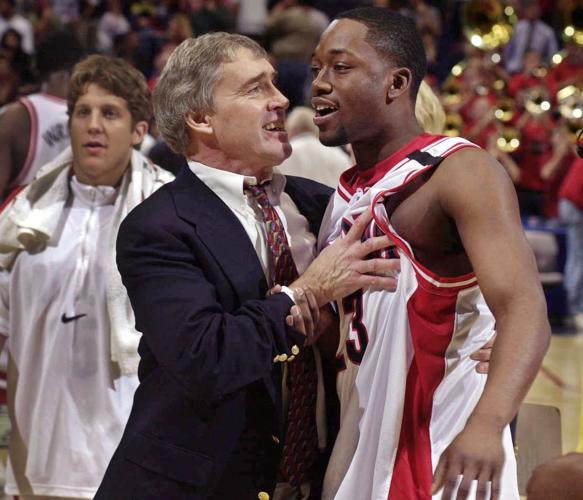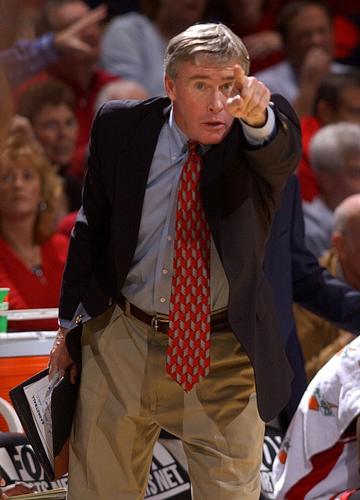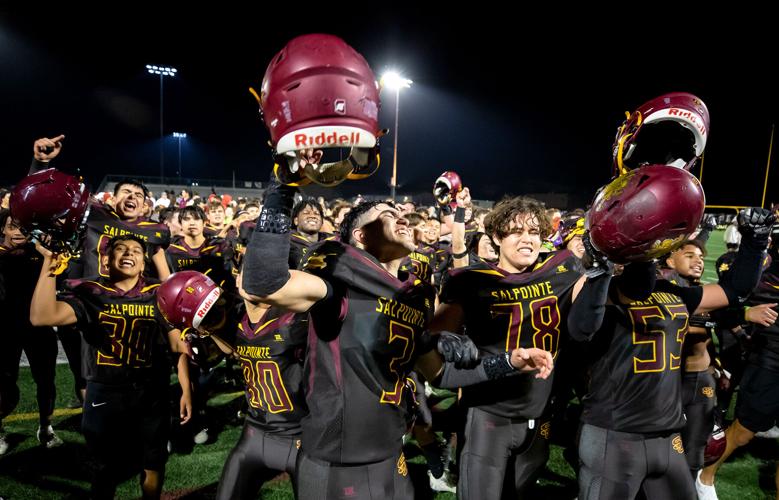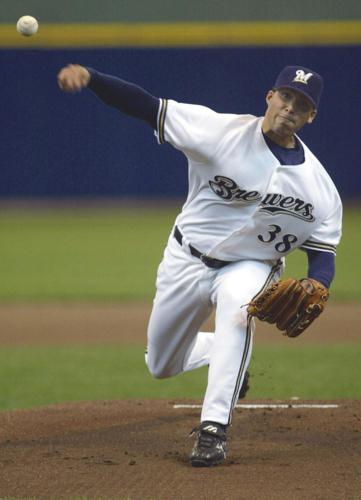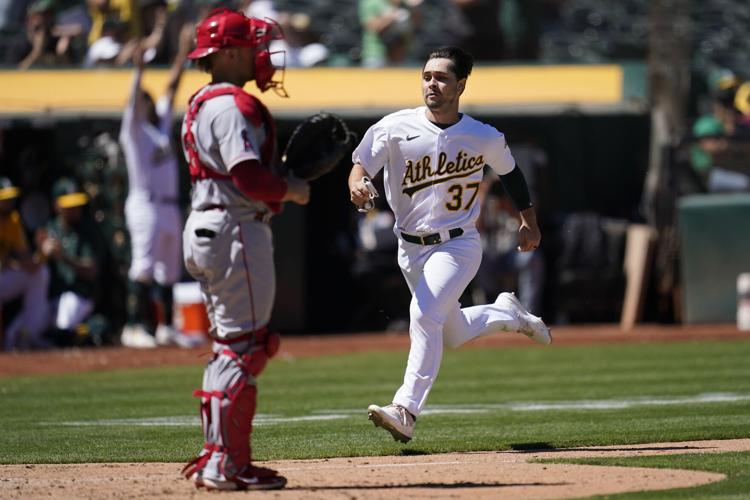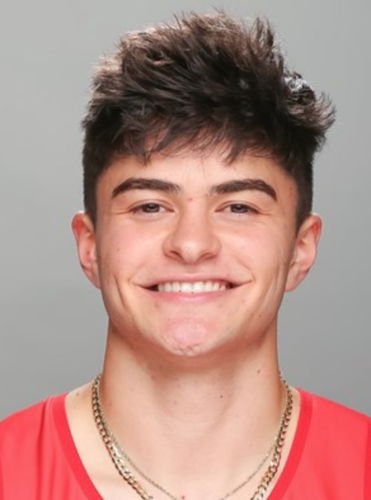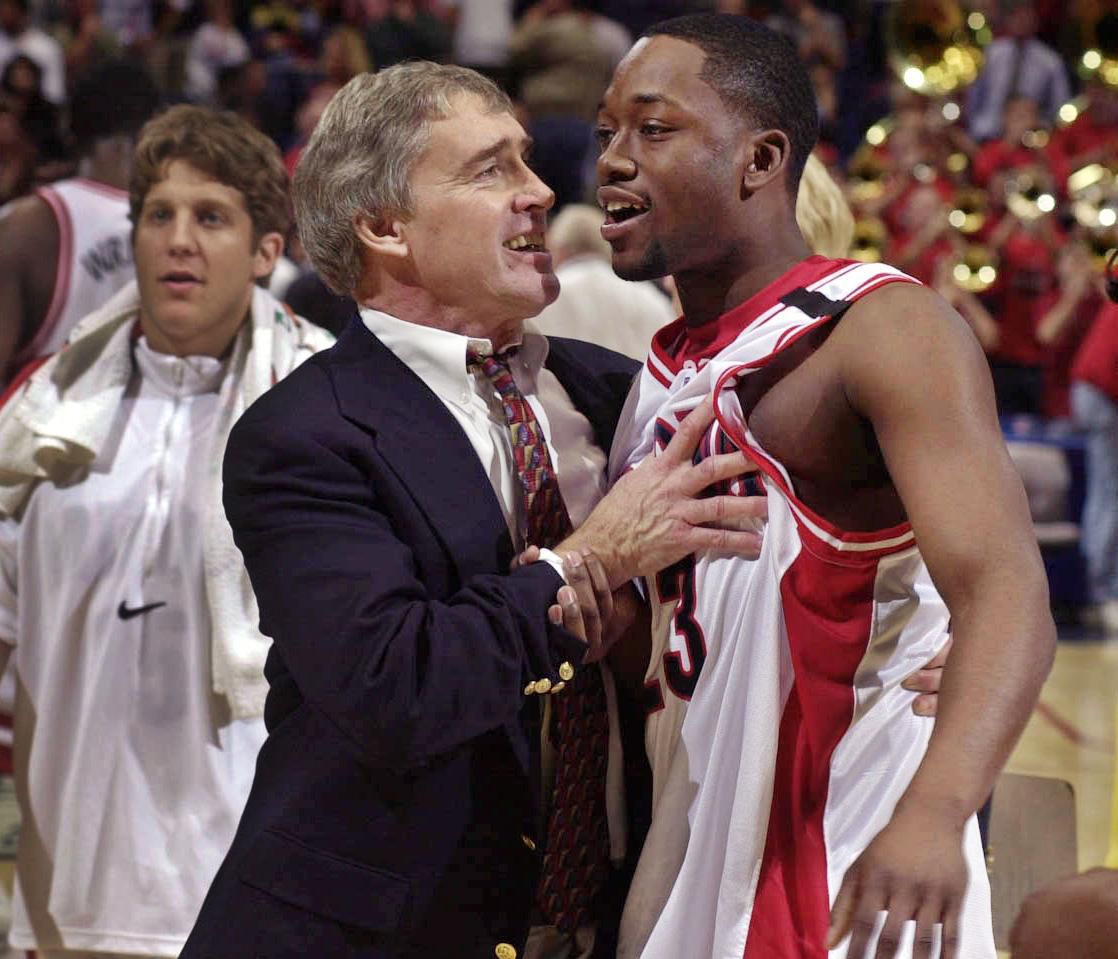The Star's longtime columnist on hall of famer Jim Rosborough, an ex-Cat's impressive push to the big leagues, and the identity of Tucson's own "Moonlight" Graham.
Impressive, engaging Jim Rosborough deserving of Pima County Sports Hall of Fame nod
Lute Olson was on vacation in Europe in the summer 1989 when the NCAA President’s Commission announced it would propose legislation to push back the start of the men's basketball season to December.
I phoned Olson’s newest assistant coach, Jim Rosborough, seeking comment. I had never met Rosborough, who had been hired in the spring of 1989. Rosborough had been Olson’s No. 1 assistant at Iowa from 1975-83, when the Hawkeyes became nationally prominent.
Last week, after I learned Rosborough had been selected to the Pima County Sports Hall of Fame, Class of 2022, I went through the Star archives to find his comments from that long-ago day. Here’s what he said:
"The bottom line is, what are we here for?" said Rosborough. "We are here to educate our players. It makes a lot of sense."
Rosborough always made a lot of sense. For the next 19 seasons, he was the heart and soul of the UA’s basketball program, a players-first coach who became a shoulder-to-learn on and a beacon of reason in a game that became more and more about money and me-first recruits.

Jim Rosborough, seen coaching the Wildcats in 2004, said earlier this year that basketball will forever be a part of him. “It gets in your blood and you can’t stop it,” he says.
In my opinion, Rosborough is one of the four leading and most impactful assistant coaches in modern UA history, linked with swimming’s Rick DeMont, football’s Duane Akina and baseball’s Jerry Stitt. Rosborough’s selection to the PCSHOF Class of 2022 is overdue and one of the highlights of a very strong class. The last seven years he has been the No. 1 assistant to Pima College women’s basketball coach Todd Holthaus and his top-20 program.
Three decades ago, Rosborough’s feelings about putting education first were initially successful. In the early '90s, the NCAA shrunk the basketball season. Arizona didn’t open play in 1992-93 until Dec. 6. But that type of education-first priority has since vanished. The UA started its last three full seasons on Nov. 6, Nov. 7 and Nov. 10. Adia Barnes' women’s basketball team will start this season Nov. 10 against NAU.
Pima County Sports Hall of Fame president Pat Darcy last week announced the full Class of 2022, which will be honored Nov. 13 at an induction banquet at the DoubleTree Hotel. Here’s the list:
• Callista Balko: A 2004 Canyon del Oro all-city softball catcher, Balko became a four-year starter for Arizona, helping the Wildcats win the NCAA championships of 2006 and 2007.
• Dave Baker: Founder of Tucson’s Summit Hut outdoor operation, Baker became one of the most influential mountain climbers and hikers in Arizona history, making dozens of assents to 14,000-feet or higher mountains.
• Steve Botkin: Sahuaro High School's girls basketball coach has won 590 career games over 26 seasons, the No. 2 total in Arizona prep history.
• Kenzie Fowler: Fowler pitched Canyon del Oro High School to 2006, 2007 and 2008 state championships — becoming the Gatorade national player of the year as a junior and senior — and then pitched Arizona to the championship game of the 2009 Women’s College World Series.
• Jason Jacome: A first-team NJCAA All-American pitcher in 1991 from Rincon/University High School, Jacome went 17-2 as Pima College finished No. 2 in the nation. Jacome then pitched five years in the major leagues.
• Lacie Williams: A state volleyball champion at Catalina High School, Williams also became an All-American track sprinter at Scottsdale Community College. Later, at Long Beach State, she was an all-conference volleyball player.
• Susie Meyers: A golf standout at Arizona who went on to play in four U.S. Opens, Meyers was named one of America’s Top 100 golf teachers in 2019.
• Chris Rastatter: One of Tucson’s leading high school basketball players while at Rincon/University High School, Rastatter has gone on to be a Final Four basketball referee, among the leading Pac-12 officials for two decades.
• Dennis Anderson: Tucson’s baseball player of the year in 1995 and an all-city football linebacker at Canyon del Oro High School, Anderson became a starting catcher at Pima College and Arizona before playing seven seasons in the minor leagues.
• Bob Scofield: A Final Four basketball referee in the NCAA women’s tournament, Scofield has been one of the Pac-12’s leading women’s basketball officials since 1999.
• Robb Salant: Winner of state tennis singles championships in 1962 and 1963 at Catalina High School, Salant went on to coach nine Tucson prep tennis teams (Catalina Foothills and Rincon) to state championships from 1989-2011.
• Cindy Coleman: A national-class Masters swimmer, ranked in the top 10, Coleman was an accomplished swimming coach of the boys and girls programs at Palo Verde High School, as well as a gymnastics coach at Cholla High School and an AIA wrestling official.
The Class of 2022 also includes two of Tucson’s leading high school teams: the undefeated, 13-0 Palo Verde High School football state championship team of 1973, coached by Van Howe, and the 1998 state champion Sahuaro High School girls basketball team coached by Jim Scott.

Salpointe Catholic's Treyson Bourguet, 3, cheers towards friends and family with his fellow teammates following Salpointe's 29-17 win over the Goodyear Desert Edge Scorpions at Salpointe Catholic High School in Tucson, Ariz. on Dec. 3rd, 2021.
High school football enters new world
If you think it’s going to be odd to see USC play football in the Big Ten against Rutgers and Minnesota, or to watch Texas play SEC football against Vanderbilt and South Carolina, you can get some break-in time watching two of Tucson’s longtime prep football powerhouses play in conferences that don’t seem to fit.
Salpointe Catholic this season will be the equivalent of USC to the Big Ten and Texas to the SEC.
The Lancers, who are Tucson’s only state football power, will play in the five-team Class 6A East Valley conference against Queen Creek, Mesa Red Mountain, Gilbert Williams Field and Mesa Mountain View.
The only games Salpointe will play against local teams are Vail’s Mica Mountain and Cienega. Salpointe’s other nonconference games come against Scottsdale Chaparral, Anthem Boulder, Chandler Basha and Tolleson.
It’s a reflection on the diminished nature of Tucson prep football over the last decade.
Diminished? Tucson’s Class 5A Sonoran conference includes struggling football schools Cholla, which is 8-31 in its last four full seasons; Flowing Wells, 17-25 over those four seasons; Rincon/University, 11-29 in that period; and once-powerful Sunnyside which went 18-23 over that time.
What’s more, the Sabino Sabercats, who had the best overall winning percentage of any Tucson prep football team from 1990-2009, reaching eight state championship games under Jeff Scurran and Jay Campos, is in the Class 3A South. What a drop. Sabino is bracketed week-to-week against small schools like Safford, Thatcher, Benson and Palo Verde, which didn’t field a varsity team a year ago.
The enrollment-diminished Sabercats still scheduled their neighborhood rivalry game against Class 4A Sahuaro, but otherwise play nonconference games against such unlikely foes as Mesa Eastmark, Sequoia Pathway and Coolidge.
If this is the future of high school football in Tucson, it can’t be good.
ASU president bemoans NCAA's pace
ASU president Michael Crow last week expressed frustration that the NCAA has not completed its investigation of the Sun Devils' football program, now reaching 14 months. Crow told The Athletic an end doesn’t appear in site and the NCAA has not yet interviewed the ex-Sun Devil coaches involved in the reported violations. What did Crow expect? The investigation by the FBI, the IARP and the NCAA into Arizona’s basketball program began in September 2017. That’s now at 59 months and dragging. Get in line, Mr. Crow.

Chicago Cubs right fielder Seiya Suzuki walks out of a cornfield before Thursday's "Field of Dreams" game against the Reds.
Minors' pace a welcome break
For the first 40 years of my life, I was an A-level major league baseball fan. I knew every lineup, most of the statistics and must’ve bored my friends with the minutia. But that all changed about 25 years ago, when MLB games began to grow longer and longer and became difficult to watch. Here’s an example: last week's "Field of Dreams" game in an Iowa cornfield took 3 hours and 21 minutes in a relatively low-scoring game. (The Cubs beat the Reds, 4-2). Two days earlier, the Single-A Davenport-Quad Cities "Field of Dreams" game in Iowa, nationally televised on the same field, took just 2:33. Why? Minor league rules were in place: an 18-second pitch clock, with batters prohibited from stepping out of the batter’s box to flex their muscles, take a few swings and otherwise stall the game’s progress. Those rules can’t be implemented in the big leagues soon enough.

Brewers pitcher Chris Saenz delivers during the first inning against of an April 24, 2004, game against the Cardinals.
Tucson has its own 'Moonlight' Graham
The "Field of Dreams" game (and movie) never fails to draw my attention. A lot of it is the "Moonlight" Graham saga, the story of a career minor-leaguer who plays in one big-league game. Tucson has its own "Moonlight" Graham. That woud be former Tucson High and Pima College pitcher Chris Saenz, who appeared in just one MLB game — on April 24, 2004 for the Milwaukee Brewers. Saenz, then 22, was terrific that afternoon, pitching six shutout innings against St. Louis, twice getting out the great Albert Pujols. But soon after that memorable day, Saenz injured his elbow, required Tommy John surgery, missed two full seasons and never got beyond Triple-A baseball again. He retired from baseball in 2008. …
Tommy Lloyd embraces UA's expectations
Arizona basketball coach Tommy Lloyd hasn’t been one to back away from expectations or use the loss of NBA draft picks Bennedict Mathurin, Dalen Terry and Christian Koloko as a reason to modify expectations for the 2022-23 season. Lloyd last week told CBS’ Seth Davis: "When you coach at Arizona, you know there are going to be high expectations every year. We have some really good players. As a team we still have to put everything together, but at the end of the day we’re going to be really hard to beat." Only UCLA will open the Pac-12 season ranked higher than the re-modeled Wildcats.

Oakland Athletics' Cal Stevenson (37) runs home to score on Tony Kemp's three run-double next to Los Angeles Angels catcher Max Stassi during the seventh inning of a baseball game in Oakland, Calif., Wednesday, Aug. 10, 2022.
Cal Stevenson makes big-league debut
Arizona starting outfielder Cal Stevenson made his MLB debut last week, for the Oakland A’s. He became the 90th ex-Wildcat to play in the big leagues. He was also one of the least likely. Stevenson was not an All-Pac-12 selection in his UA seasons, 2017 and 2018. Had I been a baseball scout, I would’ve missed wildly on my recommendations on draft day. I thought his teammate, third baseman Nick Quintana, was a lock major-leaguer. The muscular Quintana looked the part. But Quintana is now in Double-A, with a .215 career minor-league average and 249 strikeouts in 245 games. Quintana hit 342 with 15 homers and 77 RBI at Arizona, in 2018, and was a feared hitter, drafted in the second round by Detroit. Stevenson, by comparison, was a get-on-base guy, a contact hitter with hustle, versatility and the ability to make a difference in a half-dozen ways.
Will Cats' QB drought end?
One of my initial reactions when USC and UCLA announced they were abandoning the Pac-12 is that Arizona’s chances of finally producing a first-team All-Pac-12 quarterback almost doubled. The Wildcats remain the only Pac-12 team of the full 1978–2021 period not to have a first-team QB. But upon further research, USC and UCLA did not dominate the all-league QB selections. USC only had 10 in that period — it seemed like 30 — and UCLA just two. Really. Two. Troy Aikman won it in 1987 and Cade McNown in 1998. What comes first for the long-suffering UA football fan, a Rose Bowl appearance of an all-league QB? Maybe one requires the other.
My two cents: Selma trip sticks with Wildcats sprinter
The best thing I read last week came not from a journalist but from Arizona Wildcats sprinter Diego Marquez, a sophomore from Salpointe Catholic High School.
Marquez was one of 24 Pac-12 student-athletes who visited Selma, Alabama, from July 15-17 to explore one of America’s most historic Civil Rights centers. Marquez and his Pac-12 associates marched across the Edmund Pettus Bridge, site of the infamous 1965 "Bloody Sunday" violence.

Diego Marquez
In an essay posted to ArizonaWildcats.com, Marquez, in part, described his sometimes-tearful experience, this way:
"I grew up in a wealthy part of town, and I was ignorant of racism for the majority of my life. I did not see many black people, nor did I see much racism, so I did not pay attention to it. And I think it is important to acknowledge that now. I am upset that I was so unaware of this dark part of history, and I am upset at the surface-level teaching I got about black history in school.
"I understand that some of this content is hard to teach children, but it is essential to understanding our society, and a shock like that may be good for young adults. It certainly was a shock for the black children who had to witness these atrocities with their own eyes. Black history is presented to us with a sugarcoat, and I am grateful for this trip because it gave me perspective."
Well said, Mr. Marquez.


